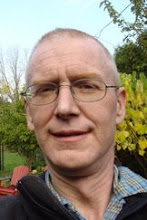- Birta, Louis G. and Gilbert Abez. Modeling and Simulation: Exploring Dynamic Systems Behaviour (London: Springer, 2007).
I have read the first chapter expect for the last three short sections including the bibliography. This chapter introduces modeling and simulations. The chapter motivates the reading of the book and covers some roots of simulation work.
I have also read most of the second chapter now but skimmed over the mathematics parts. I read this chapter on the bus from Toronto to Ottawa last Sunday. This is the chapter that covers the structure and form that our term project must take. This form also resembles the systems engineering life cycle process form I learned last winter.
I skipped chapter three which is about data modeling because I know a fair amount of this from my statistics background. The chapter also covers and introduces to me random variates which I could during the lecture guess existed in Java libraries. Now I may learn random variates both mathematically and of course in the context of numerical analysis and the computer math needed to do this. We will do this in Java but can do it in any other language that has a RND uniform random number generator ability. I may come back and scan read chapter three before our first quiz and for our final exam. I will make sure to carefully read the section on random variates.
The fourth chapter is where we are presently in the lectures and I admit I am behind on reading it.
After reading The University of Google, I can really appreciate the quality of this course. It is probably the continuity between the professors that makes the work that goes into this course possible. But I am not so sure that the author of The University of Google who taught media and the professor I am facing who is a computer science professor can be compared or would see the creation of lectures in the same way. All put lot of work into their lectures and that is why the lectures have this quality. I fully intend to use the form and conceptual modeling that these computer science professors have developed to do the conceptual model for my thesis simulation.
